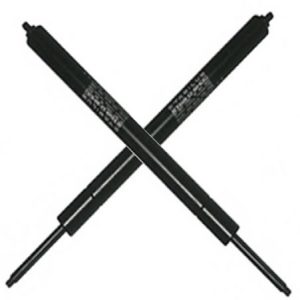
Gas springs are commonly used in positioning applications. Like all springs, they are designed to store mechanical energy. While traditional springs consist of coiled metal, though, gas springs feature a gas-filled cylinder. Here are six common misconceptions about gas springs.
#1) Only Used in Vehicles
While you can certainly find gas springs in cars, trucks and other types of vehicles, they are used in many other applications. Certain types of furniture feature gas springs, such as office chairs. Medical equipment may feature gas springs as well. They offer a reliable and long-lasting positioning solution, making them ideal for many different applications.
#2) Compression-Style Only
Another common misconception is that gas springs are only available in compression styles. Compression-style springs are designed to become shorter under a load, whereas extension-style springs are designed to become longer under a load. Gas springs are available in both types. The dampening direction of a gas spring may be compression or extension, depending on how the gas spring was designed.
#3) Consists Entirely of a Gas-Filled Cylinder
Gas springs are relatively simple devices, but they still contain several parts. They aren’t just a gas-filled cylinder. A typical gas spring consists of a rod, tube, piston, seals and end attachments. Inside of the cylinder is inert gas, which may be accompanied by a small amount of oil for lubrication purposes. As the piston pushes into the tube, the pressure will increase. The tube will essentially push inside of the tube chamber. Some of the gas will then become displaced, resulting in greater pressure.
#4) Can’t Lock in Place
Think gas springs are unable to lock in place? Think again. There are non-locking gas springs, and there are locking gas springs. Locking gas springs live up to their namesake by featuring a locking mechanism. They feature a mechanical lock that works in conjunction with a valve. When the valve is closed, the lock will activate, thereby providing a superior level of resistance to motion.
#5) Unsafe to Use
This couldn’t be further from the truth. Gas springs are absolutely safe to use. They may contain pressurized gas — while under a load — but gas springs are designed to meet strict safety standards.
#6) One-Size-Fits All
Gas springs aren’t limited to any single size; you can find them in a variety of different sizes. When shopping for a gas spring, you should consider the tube diameter and the rod diameter. These measurements will give you a better understanding of its sie. In addition to the tube diameter and rod diameter, you should also consider the extended length and the compressed length.
